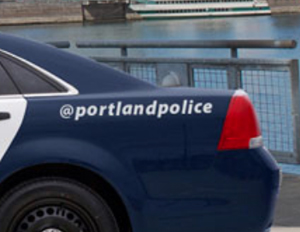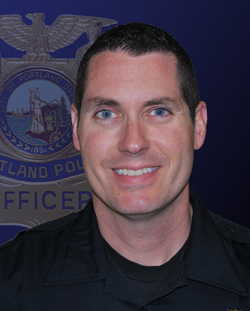 In May 2011, I had the opportunity to attend the SMILE Conference in Chicago and I came back incredibly energized with moving forward on our use of social media. One of the ideas presented at the conference was from Chief Grogan of Dunwoody, GA, about promoting an event via social media to draw followers.
In May 2011, I had the opportunity to attend the SMILE Conference in Chicago and I came back incredibly energized with moving forward on our use of social media. One of the ideas presented at the conference was from Chief Grogan of Dunwoody, GA, about promoting an event via social media to draw followers.
On Friday June 3, 2011, the Portland Police Bureau released the artwork for its new police car logos via Facebook. A news release was sent out 2 days prior and informed the community that the new design would be launched on Facebook. We encouraged people to come “like” us to see the design.
Portland Police Bureau Facebook numbers had been growing at roughly 40 per week but in the 3 days leading up to and following the vehicle design launch, 451 new people “liked” the Portland Police Bureau. Twitter followers jumped as well and the hope is that it will continue to increase because the Portland Police Bureau’s official Twitter handle (@PortlandPolice) is going to be on the new patrol cars. In addition, the Bureau also maintains a second Twitter handle (@ppbpio) for media releases and information.
In the very near future, the goal is to have officers in each of the three precincts and the Traffic Division maintaining Twitter and Facebook accounts to connect directly with the communities they serve. The Bureau has recently purchased iPads for the two PIOs and is looking at smart phones for officers to use in the field.
 The Portland Police Bureau is developing a strategic communications plan and social media is playing a big role in its development. The Office of Public Information is staffed by two full-time sworn Public Information Officers, and three non-sworn members. Part of the communications plan includes a push toward social media journalism and producing stories to be delivered directly to the community via social media platforms.
The Portland Police Bureau is developing a strategic communications plan and social media is playing a big role in its development. The Office of Public Information is staffed by two full-time sworn Public Information Officers, and three non-sworn members. Part of the communications plan includes a push toward social media journalism and producing stories to be delivered directly to the community via social media platforms.
Though traditional media remains a constant news stream for community members, the ability to tell our own story directly to community members via social media is beneficial. Recent studies conclude that people are getting their news increasingly from social media and our agency is working toward being connected with those people.
Become a “friend” of the Portland Police Bureau at Facebook.com/PortlandPolice and follow us on Twitter @PortlandPolice.
 Sergeant Pete Simpson is an 18-year-veteran of the Portland Police Bureau. Sergeant Simpson worked in the Gang Enforcement Team for 11 years as an officer and detective before promoting to Sergeant in 2008. Sergeant Simpson was a Hostage Negotiator for 7 years as well as an instructor for the National Gang Center in Tallahassee, Florida. Sergeant Simpson is currently assigned to the Chief’s Office as one of the Public Information Officer’s for the Portland Police Bureau.
Sergeant Pete Simpson is an 18-year-veteran of the Portland Police Bureau. Sergeant Simpson worked in the Gang Enforcement Team for 11 years as an officer and detective before promoting to Sergeant in 2008. Sergeant Simpson was a Hostage Negotiator for 7 years as well as an instructor for the National Gang Center in Tallahassee, Florida. Sergeant Simpson is currently assigned to the Chief’s Office as one of the Public Information Officer’s for the Portland Police Bureau.










